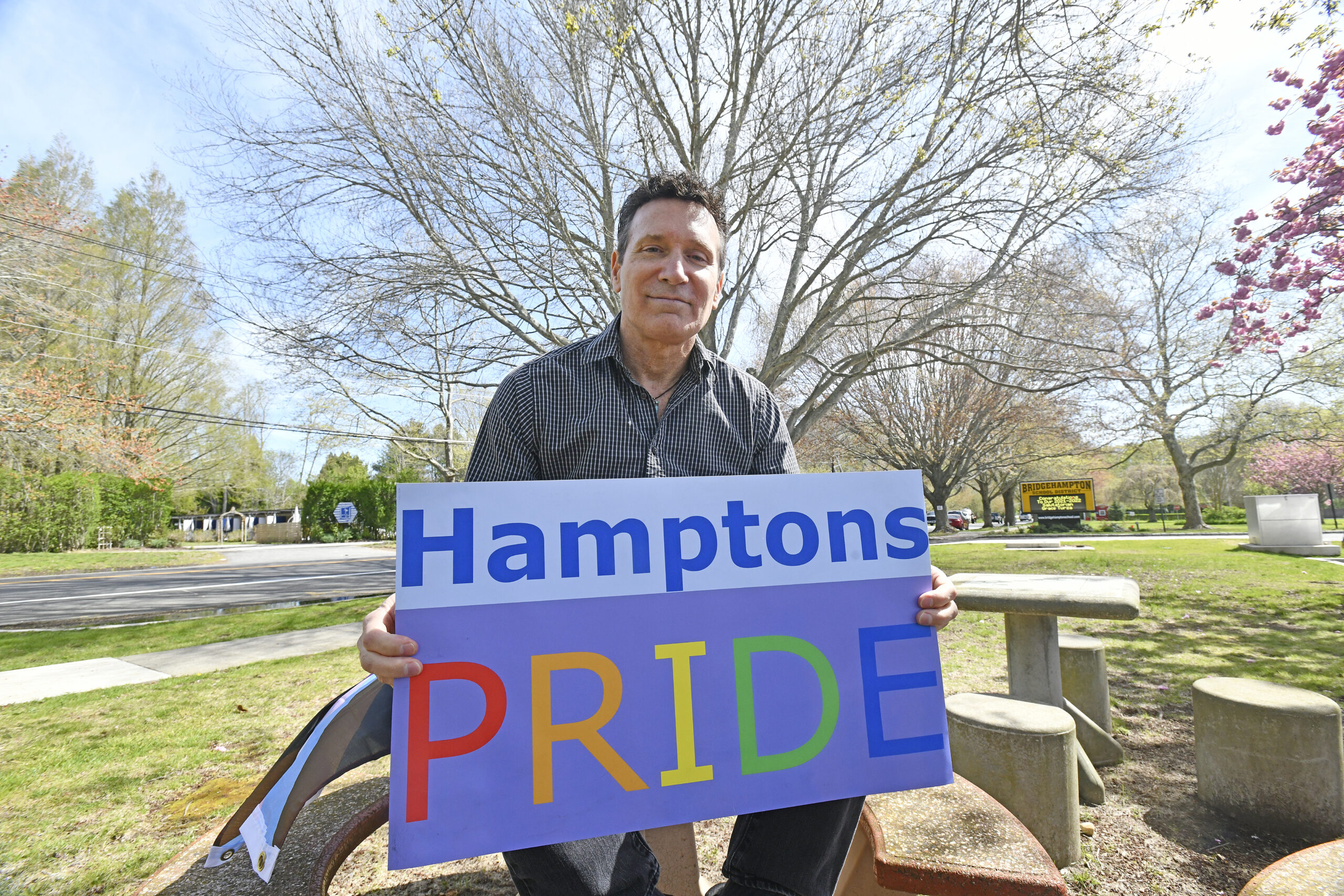
On June 28, 1970, without a police permit, 5,000 people in the LGBTQ+ community took to the streets of New York City — marching as a declaration of their existence, their love and their pride.
It marked a year after the uprising at the Stonewall Inn — which many consider as the catalyst of the modern-day LGBTQ liberation movement — but this in itself was a revolution, a display that was unthinkable up until that time.
The inaugural route, which covered about 50 blocks, inspired small marches nationwide that year — in Chicago, San Francisco, Los Angeles and beyond — and they would eventually lead to parades around the world, where Pride Month is annually celebrated in June.
This year, millions of people across a dozen countries will attend Pride events. And now, nearly 52 years since the first, the East End is finally joining them.
On Saturday, June 4, the inaugural Hamptons Pride Parade — and its LGBTQ+ participants and allies — will make history, as they march from Pond View Lane in East Hampton up Main Street, and continue to Herrick Park via Newtown Lane, Railroad Avenue, and Lumber Lane.
“This has never happened, where a village is going to close their street for Pride,” explained Tom House, the president of recently formed Hamptons Pride, the first-ever East End organization devoted exclusively to LGBTQ+ pride. “It is a big deal.”
Registration is now open to both individuals and groups, who can join by either walking, driving a vehicle or pulling a float, or playing in a band, House said.
“What we’re hoping for is a strong show of support for LGBTQ+ people on the East End,” he said. “I think it’s important for people to see that and for younger people, especially, to see that there’s pretty widespread support — from the schools to arts organizations to the fire department and ambulance.”
The parade will be led by its two inaugural grand marshals — Kathryn Szoka, co-owner of Canio’s Books in Sag Harbor, and Robert Chaloner, chief administrative officer of Stony Brook Southampton Hospital — riding in style in a pair of vintage cars.
For Chaloner, to be selected as one of the first grand marshals is an honor, he said.
“The event celebrates our LGBTQ+ community on the East End and sheds light on the rights of all individuals — and the need to continue to work toward eliminating discrimination in schools, employment, credit, housing, and other areas of life,” he said. “Personally, as a member of the LGBTQ community, I am thrilled to see Pride celebrated where I live and work.”
In the late 1970s, after New York’s march, Szoka attended one of the resulting Pride parades at the P Street beach in Washington, D.C. It was “transformative,” she said, and in the years since, she has attended parades in California and New York, all of which shared the common bond of acceptance, community and fun.
She said she is looking forward to bringing that same energy to the East End.
“Living at the intersection of being an artist, activist, athlete, LGBTQ+ member and small business owner demonstrates what one person can do for the good, right in their own community,” she said. “Visibility is crucial in the LGBTQ+ community. So often in the past, and even today, people have hidden and hide a vital part of themselves. That’s soul crushing and unhealthy.
“Young people, especially, need to see our community members who have lived through a life of challenges,” she continued, “and thrived.”
Outside of a handful of rules — no balloons, animals, or tossing souvenirs into the crowd — parade participants will have free rein to express themselves how they see fit, though House encourages groups to identify themselves with a banner or sign, and to reflect on the day’s themes.
At its heart, it’s a celebration, he said, of both the LGBTQ+ community and those who support it.
“One thing that I was struck by in the Pride Parade from the city is more and more allies are involved, showing their support,” he said. “It’s humbling. It’s come a long way — the acceptance of LGBTQ+ people — so for me, I feel like it’s a personal milestone, as well, to not only be involved in a parade, but to actually be part of the organization.”
The East Hampton parade comes at a time when the LGBTQ+ community is experiencing backlash, House said, following the Florida’s Parental Rights in Education bill, which has become known as the “Don’t Say Gay” bill because of a provision outlawing discussion of sexuality and gender identity in kindergarten through third grade.
This makes Pride parades particularly important now, Szoka said, “as civil rights are being challenged and LGBTQ+ youth are at risk.”
“The pandemic has isolated all of us,” she said. “That can be especially traumatizing to those who feel marginalized. It’s essential for us to gather in community and support each other, to feel the energy and love and acceptance that is so critical to a healthy life — and to have fun together, in community.”
The importance of forever establishing the East End as a progressive and accepting corner of the world is heightened, House said, and he hopes that this inaugural parade is a larger step toward that — an event that he anticipates will become annual, cementing its place among pride celebrations across the country.
“I think it’s important that it should be a tradition, it should be something that’s done every year,” House said. “Hopefully, in the future, when we have more time and it’s a fixture, it will grow.”
For more information about Hamptons Pride, or to register for the parade, visit hamptonspride.org.